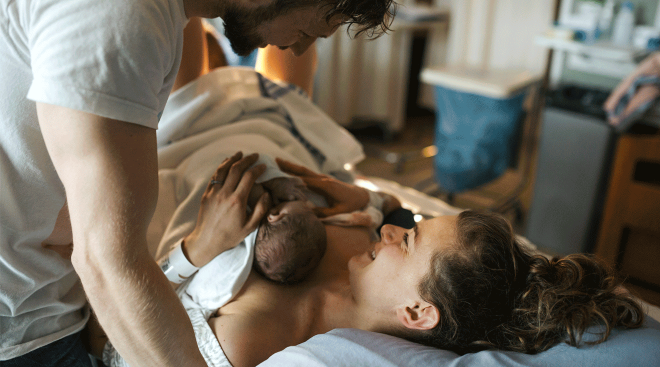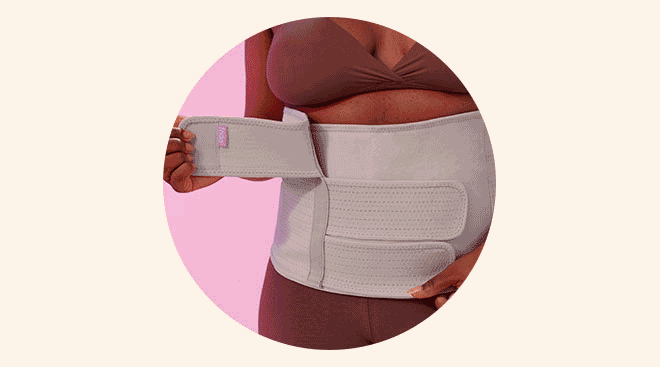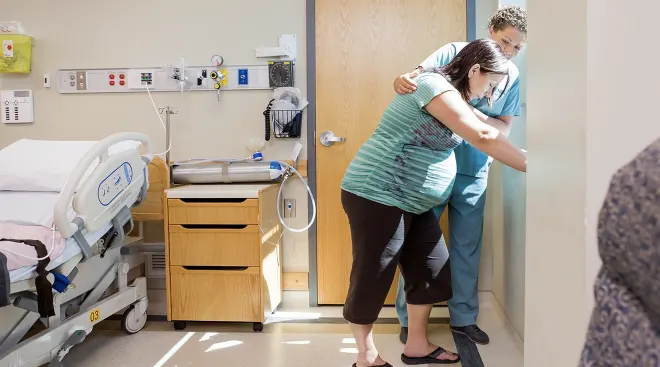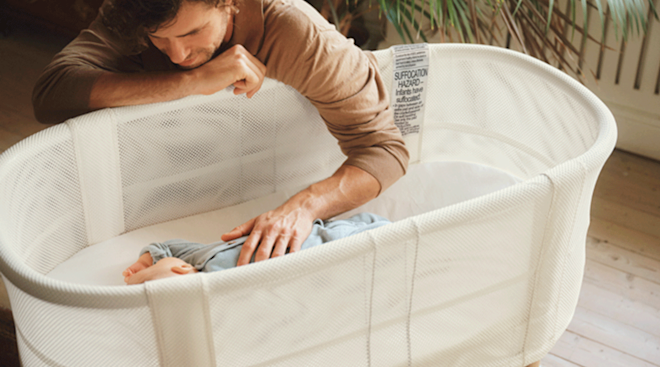Everything You Need to Know About Cord Blood Banking
If you’re pregnant, you’ve probably seen a pamphlet at your OB’s office about umbilical cord blood banking and how it can offer some security down the line if you ever have to treat baby for certain medical conditions. But it’s a big decision—one where you’ll want to carefully weigh the pros and cons. Here, we help you figure out the difference between private and public cord blood banking, and how to choose from among the different cord blood banking companies out there.
The simple answer is that it’s the blood found in baby’s umbilical cord, the lifeline that funnels key nutrients from your placenta to baby during your pregnancy. Once baby is born, the umbilical cord is cut. But while your little one no longer needs the umbilical cord in the outside world, that doesn’t mean it’s useless: It still contains blood that’s an excellent source of stem cells (similar to those found in bone marrow), which doctors can use if they ever need to perform a transplantation. If your child can’t find a matched donor from among family members or on the adult donor registry NMDP (formerly known as Be the Match and the National Marrow Donor Program), “cord blood donors are used to transplant patients with blood cancers like leukemia and lymphoma, bone marrow failure, immunodeficiency syndromes, certain inherited metabolic diseases and hemoglobinopathies, such as sickle cell anemia and thalassemia,” says Joanne Kurtzberg, MD, a professor of pediatrics at Duke University and the director of the Carolinas Cord Blood Bank. This is why many parents look into preserving baby’s cord blood.
Cord blood banking is the process of collecting and storing the blood left in a newborn’s umbilical cord, so it can be used for future medical purposes. To collect the blood, baby’s umbilical cord must first be clamped and cut in the usual way—and with minimal delays. If the clamping and cutting of the umbilical cord is delayed past a minute, the blood may clot, making it useless, per Cleveland Clinic. (The American College of Obstetricians and Gynecologists (ACOG) recommend at least 60 seconds of delayed cord clamping—speak to your provider about how this may factor into your desire to bank baby’s cord blood.)
Once the cord is clipped, a medical provider then inserts a needle into the umbilical vein on the part of the cord that’s still attached to the placenta. (Worried about that needle getting anywhere near baby? Don’t be: Once the cord has been cut, the needle has no contact with your newborn, says Rebekah Mustaleski, CPM-TN, a certified professional midwife and compression director with Motif Medical.) That needle is used to drain the blood—about 1 to 5 ounces—into a collection bag, which is then sealed and sent to a cord blood bank. The process typically takes less than 10 minutes. (Note: The umbilical cord is cut in the same way before it’s drained, so cord blood collecting shouldn’t interfere with how quickly Mom and baby can have immediate skin-to-skin contact.)
After the blood makes it to the bank, it’s tested and, as long as it meets quality standards, cryopreserved for long-term storage—and we do mean long. “While we don’t know if cord blood has an exact expiration date, it’s been stored for 25 years and successfully used for a transplant,” Kurtzberg says. “It’s likely that when stored properly, cord blood units can be stored for decades.”
Here’s the tricky part of cord blood banking: You have two options for what to do with that blood. You can donate it to a public cord blood bank, where anyone in need can use it, or you can send it to a private cord blood bank and keep it for your own child, should they need it one day down the line. Here’s a closer look at how private cord blood banking differs from public cord blood banking:
Private cord blood banking
Private cord blood banking is the storage of a newborn’s umbilical cord blood in a private facility, where, once it’s tested to ensure its healthiness, it’s stored for a fee (more on this later). One day—should the need arise—baby or an immediate member of baby’s family can use the cord blood’s stem cells to potentially treat a variety of medical issues. When we say family members, we almost always mean siblings, since they have the best chance of being a perfect match. “Cord blood may also be used for a matched sibling who needs a transplant if sufficient cells are stored,” Kurtzberg says. “There’s a 25 percent chance that any two siblings will match each other. Cord blood may also be able to be used if it’s half-matched, which happens 50 percent of the time between siblings.” Unfortunately, distant relatives and even parents are unlikely to match with their children.
Public cord blood banking
In public cord blood banking, instead of holding on to baby’s umbilical cord blood for family only, the donation can be used by anyone in need. (Note: Minorities are the least represented demographic in public banks.)
Cord blood collection for public cord blood banking happens in much the same way that private does. However, per the American Academy of Pediatrics (AAP), public cord blood banks have a more rigorous testing process and are regulated by accrediting institutions, including the Association for the Advancement of Blood & Biotherapies (AABB) (a trusted, international, nonprofit organization that represents all those involved with transfusion medicine) and Foundation for the Accreditation of Cellular Therapy (FACT).
As part of these regulations, baby’s cord blood is first checked to ensure it has enough blood-forming cells for a transplant. If it does, and it’s not contaminated in any way, it’ll be typed into and listed in the C.W. Bill Young Cell Transplantation Program (also called the NMDP Registry). It will then be frozen and stored, until it’s selected as a match for any patient, regardless of whether they’re related to baby. If the cord blood doesn’t have enough blood-forming cells, then it may be used for research to improve the process of cord blood banking or to test new cord blood treatments—or it may be discarded.
The cost of banking cord blood can be a contributing factor to your decision. According to the AAP, it’s free to donate to a public cord blood bank in the US. However, private cord blood banking can be costly. It depends on the facility, but generally speaking, there’s a $1,000 to $2,500 enrollment or processing fee at many private cord blood banks, plus an annual storage or maintenance fee (between $100 to $200 per year on average), the AAP notes. Many parents see this as an investment in the future of their child—and of their family—should any stem cell–treatable medical issues arise.
Cord blood banking cost is the biggest obstacle for many parents, but keep this in mind: If your child or someone in your family has a medical condition that could potentially be treated with the stem cells found in cord blood, the expenses associated with private cord blood banking are tax deductible. Plus, if an immediate family member already has a life-threatening illness, public and private cord blood banks have special financial programs to help families with a qualifying medical need. But as for whether private cord blood banking is covered under medical insurance, Mustaleski says it usually isn’t. “Some cord blood banks will offer sales or discounts, but unless there’s a medical necessity for the cord blood to be stored, families will pay out of pocket for cord blood banking.”
Can’t decide between private and public cord blood banking—or whether to do it at all? Consider this: Often, if a child is sick, their cord blood wouldn’t be suitable for transplant. That’s because a genetic condition would likely have been present at birth, meaning the mutation would also be found in the cord blood. So if the child is sick and needs cord blood stem cells for treatment, someone else’s unmutated cord blood would be needed. As more people donate to public cord blood banks, the chances of finding an ideal match will increase. That’s why the AAP recommends donating cord blood instead of discarding it, so that we can all pull from a robust shared collection and potentially save lives.
That said, if a close family member already has a need for treatment using stem cells, baby’s cord blood has a fair chance of being a perfect match—around 30 percent between biological siblings, NMDP says. “Those who should consider private cord blood banking are families affected by diseases and conditions that are known to benefit from cord blood transplants,” says Mitchell S. Cairo, MD, chief of pediatric hematology, oncology and stem cell transplantation at Maria Fareri Children’s Hospital at Westchester Medical Center in Valhalla, New York. “Also, you might consider it if there’s a family history of certain genetic conditions, such as leukemia, sickle-cell anemia or thalassemia.”
Keep in mind, not all diseases treated with cord blood stem cells are genetic. Case in point: certain cancers. In those cases, baby may be able to turn to their own cord blood for treatment one day. New discoveries of how cord blood can treat future medical conditions are being researched by several university medical institutions, including Duke, which has a $41 million project in the works to study the use of cord blood stem cells in patients with autism and certain brain disorders and injuries, Kurtzberg says. “The field of using stem cells for disease is still very young and researchers are learning more all the time about which cases are benefited by cord blood and which ones are not,” Mustaleski adds. “Finding matched donors is part of that process and impacts the availability and success of cord blood treatment.”
Ultimately, making the decision to bank baby’s cord blood—and how—is highly personal. Below are some overarching cord blood banking pros and cons to help inform your decision.
Cord blood banking pros
- By storing baby’s cord blood in a cord blood bank, they may be able to access it one day if needed for a non-genetic condition.
- Close family members in need could also use that cord blood, potentially avoiding the process of finding a match.
- There are financial programs to help families dealing with an eligible medical need.
- New cord blood treatments are being researched all the time. Some experts believe cord blood may one day be able to treat lupus, Parkinson’s disease, brain injuries, cardiovascular disease and breast cancer.
- Even if you don’t store baby’s cord blood privately, donating it to a public bank could save the life of someone else in need. “Your baby’s cord blood contains valuable therapeutic cells,” Kurtzberg says. “Essentially, one life can save another.” There’s nothing dangerous or painful about collecting cord blood.
Cord blood banking cons
- Private cord blood banking can be expensive—$1,000 to $3,000 to bank the blood, and $100 to $200 every year after that for storage.
- While cord blood banking isn’t dangerous in any way, if baby develops a genetic disease, there’s a chance they may not be able to use their own cord blood (though someone else in the family might). Should your child one day need cord blood, they can turn to the public cord banks and try to find a match.
- If you want to store or donate baby’s cord blood, you have to find a hospital with experience in cord blood banking. “You don’t want to risk having an inadequate collection,” Cairo says. “And choose an established cord blood bank. You want it to be there in 20 years.”
- If collected and stored improperly, the cord blood samples may be too small or become contaminated with microbes, rendering them ineligible for use.
If you decide on private cord blood banking, you’re going to need to choose a bank. It’s a big investment—financially, physically and emotionally—so you’ll want to choose not only a good cord blood bank, but the right one for you. So how do you narrow down your list? To start, “the bank should be well established, registered with the Food and Drug Administration (FDA) and accredited by either FACT or AABB,” Kurtzberg says. Here is her checklist for evaluating a good cord blood bank:
- The bank should provide a kit with the materials needed to collect the cord blood.
- The bank should process the blood to lower volume and partially deplete the collection of red blood cells.
- The blood should be tested for sterility.
- The bank’s lab should perform donor screening tests on mom’s blood.
- Extra samples should be saved for future testing.
- The blood should be frozen in a bag that has attached segments for identity and potency testing.
- The cord blood unit should be stored in monitored liquid nitrogen freezers in the liquid or vapor phase (i.e., -180°C or colder).
Here are cord blood banks with solid customer reviews, plus their success rates in storing cord blood that can one day be used in treatment:
- Americord Founded in 2008 by two parents looking to preserve their daughter’s cord blood and stem cells, Americord is accredited by the AABB and FDA, as well as has laboratories certified by Clinical Laboratory Improvement Amendments (CLIA). The registry seeks to help people live longer, healthier lives, with options for cord blood, cord tissue and placental tissue storage. Plus, it’s the only stem cell bank in the country that offers exosome banking for Mom and baby.
- CBR, a California Cryobank company
Founded in 1992, Cord Blood Registry is a California-based company and one of the largest and oldest cord blood banking facilities in the country. It’s accredited by the AABB and FDA, as well as has a top rating from the Better Business Bureau. It also has its own private CLIA-certified labs that test for HIV, hepatitis, syphilis and other infectious diseases. Testing is included in the registration fee. - ViaCord
An industry leader for the past 25 years, ViaCord is the second largest cord blood bank in the US. Their lab is FDA registered, CLIA certified and AABB accredited, and they can store both cord blood and cord tissue. ViaCord also offers genomic testing, a diagnostic DNA test that can detect conditions that standard prenatal and newborn screens don’t and help families make informed decisions about their family’s health. - Cryo-Cell International
Based in Florida, Cryo-Cell International is accredited by not only the AABB but also the FACT. Cryo-Cell boasts a top-notch collecting kit, designed to protect stem cells for up to 30 times longer than the average kit. - Lifebank USA
Also accredited by the AABB, this New Jersey company has one feature that sets it apart: It stores both umbilical cord blood and placenta blood (the latter is done for free). Stem cells from placenta tissue can turn into skeletal tissues down the line.
Frequently Asked Questions
When should you start discussing cord blood banking?
Mustaleski says you should start discussing plans for cord blood banking at the start of your third trimester to ensure your bank and your healthcare team are prepared. “Umbilical blood can’t be saved and collected later, so it’s essential to have the necessary supplies and have your team prepared before the birth,” she explains.
Along with discussing it with your provider, you’ll also want to contact the cord blood bank you wish to use. Per ACOG, a collection kit should be obtained at least six weeks prior to your due date, in case your hospital doesn’t keep collection kits handy. Plus, you’ll need to correctly fill out any paperwork in a timely manner, providing necessary family medical history and your consent for cord blood banking. You’ll also likely need to get your blood tested.
Is cord blood banking worth it?
Ultimately, cord blood banking is a personal preference—so only you can decide whether or not it’s worth it for you and your family. “We all have different priorities…the research on cord blood is impressive and promising, but cord blood storage can be expensive,” Mustaleski points out. “This decision is one that each family must make for themselves.”
Deciding whether or not to bank baby’s cord blood is a highly personal decision based on your family medical history and finances. The best way to tackle the decision? Speak to your healthcare provider and do your research on vetted platforms. If you do decide to bank baby’s cord blood, don’t send it in and forget about it—make sure to follow up on any tests the bank did and ask any questions you have about baby’s samples.
Please note: The Bump and the materials and information it contains are not intended to, and do not constitute, medical or other health advice or diagnosis and should not be used as such. You should always consult with a qualified physician or health professional about your specific circumstances.
Plus, more from The Bump:
Mitchell S. Cairo, MD, is the chief of pediatric hematology, oncology and stem cell transplantation at Maria Fareri Children’s Hospital at Westchester Medical Center in Valhalla, New York. He earned his medical degree from University of California San Francisco-Fresno and completed his pediatric residency at Harbor-UCLA Medical Center.
Joanne Kurtzberg, MD, is a professor of pediatrics and pathology at Duke University and the director of the Carolinas Cord Blood Bank. She has over 30 years of experience and earned her medical degree from New York University.
Rebekah Mustaleski, CPM-TN, IBCLC, is a certified professional midwife specializing in evidence-based maternity care. She co-founded Roots & Wings Midwifery in Knoxville, Tennessee. Mustaleski received her bachelor’s degree in psychology from Centre College and worked as a doula and birth photographer prior to establishing Roots & Wings.
Cleveland Clinic, What You Should Know About Delayed Cord Clamping After Birth, December 2021
American College of Obstetricians and Gynecologists, Delayed Umbilical Cord Clamping After Birth, December 2020
American Academy of Pediatrics, Newborn Umbilical Cord Blood Banking and Donation: AAP Policy Explained, October 2017
Pediatrics (American Academy of Pediatrics), Cord Blood Banking for Potential Future Transplantation, January 2007
NMDP, Cord Blood FAQs
Duke University, Expanded Access Protocol: Umbilical Cord Blood Infusions for Children With Brain Injuries, June 2024
CBR, a California Cryobank company, We’re growing our CBR family!, August 2018 Better Business Bureau, CBR Systems, Inc., January 2019
American College of Obstetricians and Gynecologists, Cord Blood Banking, July 2022
Learn how we ensure the accuracy of our content through our editorial and medical review process.
Navigate forward to interact with the calendar and select a date. Press the question mark key to get the keyboard shortcuts for changing dates.




















































